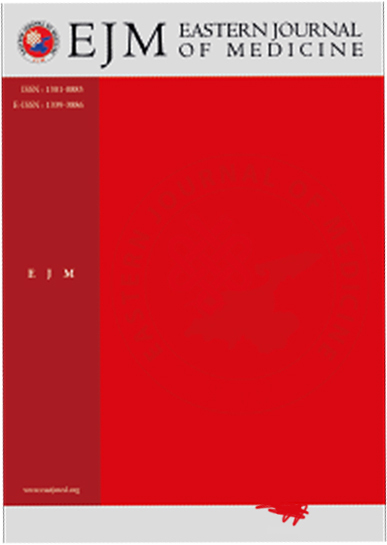Wolff-Parkinson-White syndrome in children: A single-center experience
Mehmet Gökhan Ramoğlu1, Yasemin Nuran Dönmez2, Zerrin Karakuş Epçaçan3, Serdar Epçaçan21Ankara University, School of Medicine, Department of Pediatric Cardiology, Ankara, Turkey2University of Health Sciences, Van Training and Research Hospital, Department of Pediatric Cardiology, Van, Turkey
3University of Health Sciences, Van Training and Research Hospital, Department of Pediatrics, Van, Turkey
INTRODUCTION: This study aims to evaluate the clinical characteristics and outcomes of children with intermittent and persistent Wolff-Parkinson-White (WPW) syndrome.
METHODS: Children followed up with the diagnosis of intermittent WPW and WPW syndrome between 2014 and 2022 were reviewed retrospectively. The age, gender, duration of follow-up, admission reasons, electrocardiography (ECG), echocardiography, and ambulatory ECG findings, electrophysiological study and ablation results were analyzed.
RESULTS: The study included 99 children with intermittent WPW and 38 children with WPW syndrome. The most common complaint on admission was palpitation (28.5%), murmur (22.6%), and chest pain (19%). Seven of the cases had a history of documented supraventricular tachycardia (SVT) and one of them had SVT on admission. On initial ECG 40.9% and 27.7% of the cases had intermittent and persistent WPW, respectively. Ninety-five (69.4%) cases had a structurally normal heart, whereas congenital heart disease, valvular disease, and mild septal hypertrophy were found in 25 (18.3%), 16 (11.7%), and 1 case, respectively. In the whole study group, 49 (35.8%) cases underwent electrophysiological study (EPS). Five cases had a diagnostic procedure and catheter ablation was performed in 39 (28.5%) cases. Five cases were lost from follow-up after referral for EPS. Recurrence was observed in only one case and none of the cases had any adverse event.
DISCUSSION AND CONCLUSION: Early diagnosis, risk stratification, and appropriate management of patients with WPW syndrome are crucial. The electrophysiological study is used as a risk stratification tool and catheter ablation is a safe curative procedure in high-risk patients.
Manuscript Language: English














